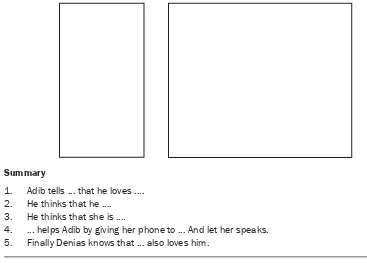I. Introduction: Interlanguage: English for Senior High School Students XI
This textbook, "Interlanguage: English for Senior High School Students XI Science and Social Study Programme," aims to enhance English language proficiency among senior high school students in Indonesia. The authors, Joko Priyana, Riandi, and Anita Prasetyo Mumpuni, employ a communicative approach, focusing on the integrated development of listening, speaking, reading, and writing skills. The book's structure is built around two learning cycles: an oral cycle emphasizing listening and speaking, and a written cycle focusing on reading and writing. Each cycle incorporates four learning activities: introduction, exposure to the target language, explanation of grammatical elements, and guided and free communication practice. The inclusion of homework assignments and review sections further reinforces learning.
II. Communicative Approach and Integrated Skills Development
The textbook's foundation lies in the communicative approach, prioritizing functional language use in real-life contexts. This approach moves beyond rote memorization and grammatical drills, focusing instead on developing students' ability to communicate effectively. The integrated approach to skills development means that students are not taught listening, speaking, reading, and writing in isolation. Instead, these skills are interwoven throughout the units, recognizing the interconnected nature of language acquisition. This holistic approach is crucial for fostering authentic communication skills.
III. Unit Structure and Pedagogical Features
Each unit in the textbook is structured to provide a comprehensive learning experience. It begins with engaging activities designed to activate prior knowledge and stimulate interest. This is followed by focused instruction on specific grammatical points and vocabulary relevant to the unit's theme. The inclusion of listening activities, dialogues, and role-playing exercises actively engages students in the learning process. Reading passages are carefully selected to expose students to various genres and styles of writing. Finally, writing activities provide opportunities for students to practice their writing skills and receive feedback.
IV. Cultural Sensitivity and Contextualization
The textbook integrates cultural elements into the learning process, fostering cross-cultural understanding. It includes discussions of various Thanksgiving celebrations from around the world, highlighting the diverse ways in which gratitude and harvest festivals are observed. This approach is crucial for promoting intercultural competence and broadening students' perspectives. The inclusion of Indonesian cultural elements also ensures relevance and engagement for the target audience.
V. Assessment and Feedback Mechanisms
The textbook provides opportunities for both formative and summative assessment. Formative assessment is incorporated through various activities throughout each unit, providing students with regular feedback on their progress. Summative assessment is facilitated by review sections at the end of each semester. This dual approach allows for continuous monitoring of student understanding and timely adjustments to teaching strategies. The answer key in the appendix serves as a valuable resource for both students and teachers.
VI. Conclusion: Aligning with Educational Objectives and Learning Outcomes
This textbook successfully aligns with the educational objectives of developing communicative competence in English among senior high school students. The communicative approach, integrated skills development, and focus on cultural sensitivity contribute to achieving the intended learning outcomes. The well-structured units, diverse activities, and assessment mechanisms ensure that students acquire the necessary language skills and cultural knowledge for effective communication. The textbook serves as a valuable resource for both teachers and students, facilitating a dynamic and engaging learning experience.
